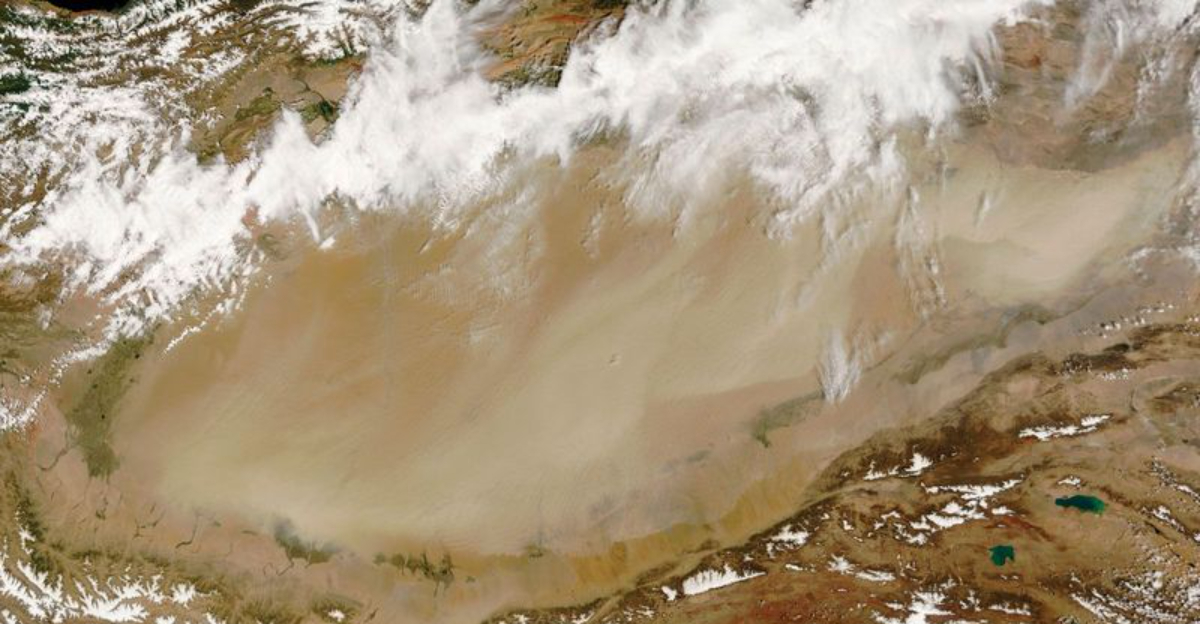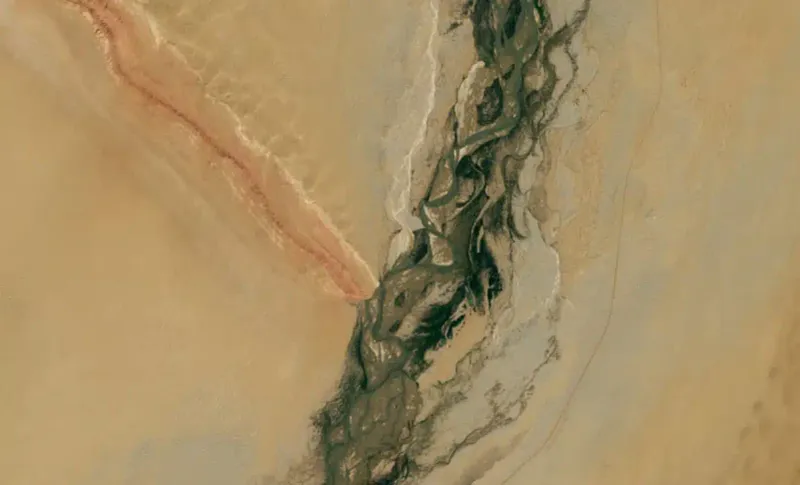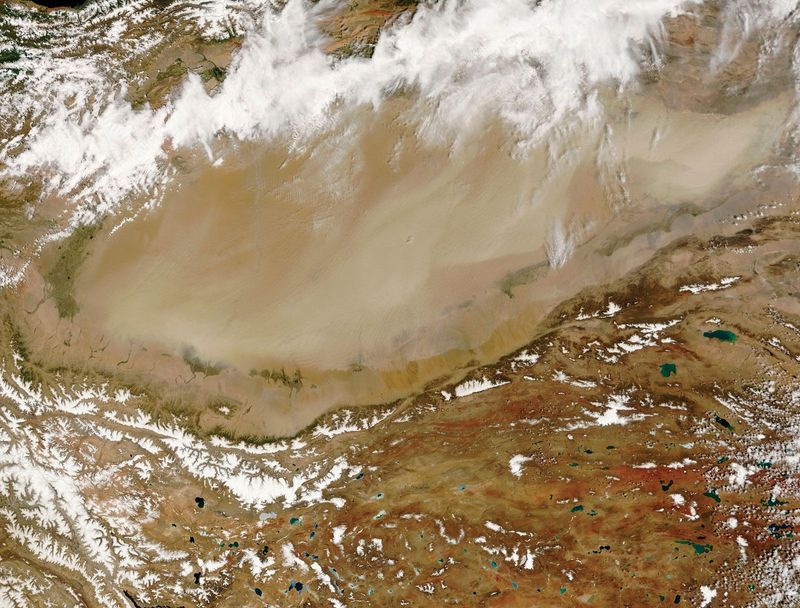Hidden deep within China’s western deserts, the Mazartagh Ridge stands as one of nature’s most mysterious formations—a towering wall of rock and sand that stretches across an endless sea of dunes. This natural barrier, rising dramatically from the Taklamakan Desert, has silently shaped the landscape for millions of years while influencing everything from wind patterns to ancient trade routes. Few people know about this remote wonder, yet it holds fascinating secrets about geology, ecology, and human history that scientists are only beginning to uncover.
The Bold Ridge in the Heart of the Desert
Deep in the vast Tarim Basin of western China lies the striking Mazartagh Ridge—an arc-shaped natural wall stretching roughly 145 kilometers and rising about 200 meters above the surrounding dunes. The ridge’s bold red-and-white rock formations—iron-rich sandstones and layered gypsum beds—mark a vivid contrast against one of the driest landscapes on Earth.
Located within a region dominated by the Taklamakan Desert, this barrier doesn’t just rise aesthetically—it actively reshapes the movement of sand and wind across the basin. In an environment of extremes, the ridge is a geological anchor, sculpted over millions of years.
Astronauts aboard the International Space Station can spot this formation from orbit, making it one of Earth’s most visible natural landmarks from space.
Nature’s Barrier: Controlling Dunes and Winds
Acting like a silent guard in the desert, the Mazartagh Ridge performs an incredible job of controlling sand movement. Researchers using satellite imagery determined that it blocks approximately 62 percent of the sand carried by northeasterly winds, reducing southward sand drift by about 13 percent.
North of the ridge, vast fields of crescent-shaped barchan dunes and star dunes dominate the landscape. South of it, elongated linear dunes prevail instead. The difference in dune types reflects how the ridge interrupts and redistributes sand flows.
This natural formation isn’t just scenic—it orchestrates how the desert behaves, shelters pockets of life, and shapes the very architecture of the sand sea around it. Without this ridge, the entire region would look completely different.
A Green Ribbon in a Sea of Sand
Amidst the arid expanse, the nearby Hotan River—fueled by glacial melt from the Kunlun Mountains—provides a lifeline of water through the desert. Along its banks flourish poplars, salt cedars, and grasses, forming a vivid band of green in stark contrast to barren dunes.
For centuries, this river corridor has supported human settlement, wildlife, and trade—notably jade-pebble gathering along its gravel bars. Ancient merchants traveling the Silk Road relied on this water source as a crucial stop during their long journeys across Central Asia.
The interplay between the ridge, the river, and the shifting desert dunes creates a rare nexus where geology, ecology, and human history converge. This green ribbon remains a testament to nature’s resilience in extreme conditions.
Layers of Time: History Written in Stone and Sand
The Mazartagh Ridge and its surrounding region hold more than geological secrets—they carry human stories too. Along the Hotan River sits the remains of an 8th-century fort, once part of the Tibetan Empire’s network along the Silk Road.
In ancient times, jade sourced from these waters traveled to distant markets, connecting this remote ridge with far-flung civilizations across Asia and beyond. Traders braved harsh desert conditions to transport these precious stones, building empires on their profits.
Today, through high-resolution remote sensing and field study—such as zircon dating of ridge rocks—scientists trace the uplift of the ridge to the edge of the Tibetan Plateau over tens of millions of years. From shifting dunes to empire legacies, this ridge remains both ancient and alive.








